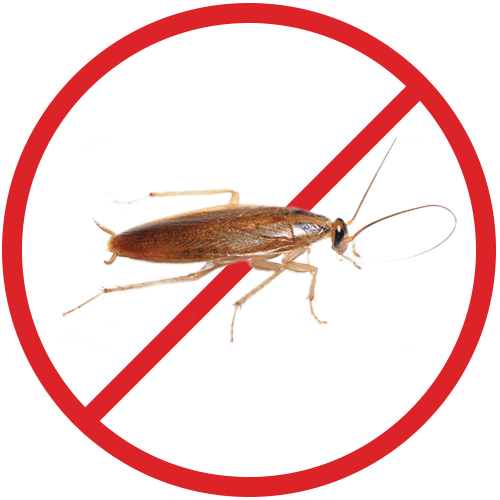Cockroaches

The adult cockroach is light brown and measures between 12 and 16 mm in length. Two dark strips go from its head to the base of its abdomen. Even though adults have wings, they only use them to glide. The nymph looks like the adult, but with undeveloped wings; it is unable to reproduce. It will molt out of its skin five to six times before reaching adulthood and measures about 3 mm in length at birth. This urban parasite can be found in houses, multi-unit dwellings, restaurants, hotels, schools, etc. No building is immune and the cockroach is harmful to the health of its occupants, as it dwells in various dirty places, like garbage and sewers. Furthermore, it carries pathogenic bacteria that may contaminate our food and belongings with its excrements. Thus, anyone can catch an illness such as typhoid fever or severe diarrheas because of cockroaches.
The cockroach reproduces easily in dirty environments, but has no problem in settling in clean environments, which makes it the most adaptable insect on the planet: it can survive anywhere, even without food, since it eats paper, cardboard, glue, etc.
Once impregnated, female cockroaches carry an egg case on the end of their abdomens that may hold from 8 to 50 babies. This case that the female carries for about one month is called an ootheca. Before hatching time, they deposit the ootheca in a crevice sheltered from predators. One of their favorite hiding places is behind appliances, like a refrigerator whose motor provides constant warmth. The space around the sink at the level of the cabinets is also a very good place for them, because it offers a permanently damp environment. Hatching occurs 24 hours after the oothecal is deposited. Cockroaches may live between 6 and 12 months depending on their habitat’s conditions and may produce four to eight oothecas during their lifetime. Development from nymph to adult takes 3 to 4 months. Without an adequate control, a cockroach infestation may create a population of 25,000 after only one year.
- Purchase of contaminated food, such as beer cases, bags of potatoes, bags of onions, etc.
- Contamination by neighbors: application of repulsive insecticides like Raid that sends the cockroaches to adjoining units.
- Purchase of infected appliances, like a refrigerator, an oven, a microwave oven, a toaster, etc.
Example of a frequent catch-22: Somebody buys a contaminated case of beer. The contaminated case is brought back to the convenience store. The store then sends this case in a truck to a recovery plant. Infested environments: home of the consumer, convenience store, truck and plant.
- Empty all the upper and lower cupboards in the kitchen and the bathroom.
- Empty the pantry.
- Place kitchen items in the middle of the living room or of a bedroom to give access to the technician.
- Ensure the kitchen counter is empty; please leave nothing on it.
- Clear a space along the walls and take out garbage bags, recycling from the kitchen, etc.
- Give access to electric baseboards. (radiator)
- Do not use insecticides !
- Clean the apartment and avoid using products that are too powerful, such as Javel water and paint.
- Healthy people must leave the premises for 4 hours.
- Children aged 5 years or less must be kept away from the premises for 8 hours.
- People with breathing problems must leave the premises for 8 hours.
- Animals must be kept away from the premises for 8 hours.
- Pregnant women must leave the premises for 12 hours.
- Sweep along the baseboards (along the walls) in the kitchen and the bathroom in order to push the extra powder (if any) into cracks.
- Do not use a mop for a period of 3 weeks in the treated areas.
- Wipe with a dry cloth the kitchen cupboards and the bathroom cabinets.
- Clean the counter (kitchen and bathroom) and the stovetop with soapy water.